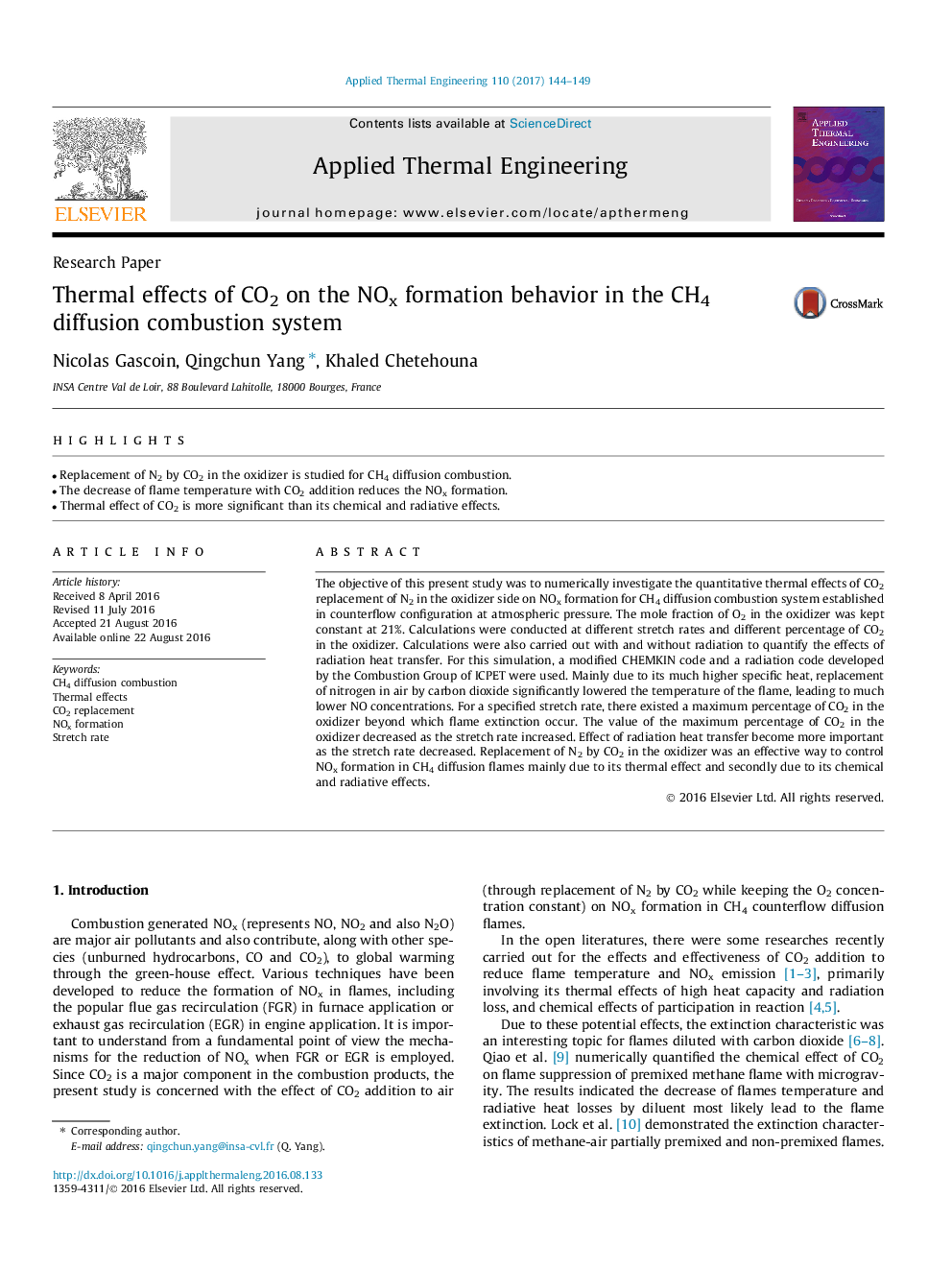| Article ID | Journal | Published Year | Pages | File Type |
|---|---|---|---|---|
| 4992002 | Applied Thermal Engineering | 2017 | 6 Pages |
Abstract
The objective of this present study was to numerically investigate the quantitative thermal effects of CO2 replacement of N2 in the oxidizer side on NOx formation for CH4 diffusion combustion system established in counterflow configuration at atmospheric pressure. The mole fraction of O2 in the oxidizer was kept constant at 21%. Calculations were conducted at different stretch rates and different percentage of CO2 in the oxidizer. Calculations were also carried out with and without radiation to quantify the effects of radiation heat transfer. For this simulation, a modified CHEMKIN code and a radiation code developed by the Combustion Group of ICPET were used. Mainly due to its much higher specific heat, replacement of nitrogen in air by carbon dioxide significantly lowered the temperature of the flame, leading to much lower NO concentrations. For a specified stretch rate, there existed a maximum percentage of CO2 in the oxidizer beyond which flame extinction occur. The value of the maximum percentage of CO2 in the oxidizer decreased as the stretch rate increased. Effect of radiation heat transfer become more important as the stretch rate decreased. Replacement of N2 by CO2 in the oxidizer was an effective way to control NOx formation in CH4 diffusion flames mainly due to its thermal effect and secondly due to its chemical and radiative effects.
Related Topics
Physical Sciences and Engineering
Chemical Engineering
Fluid Flow and Transfer Processes
Authors
Nicolas Gascoin, Qingchun Yang, Khaled Chetehouna,
